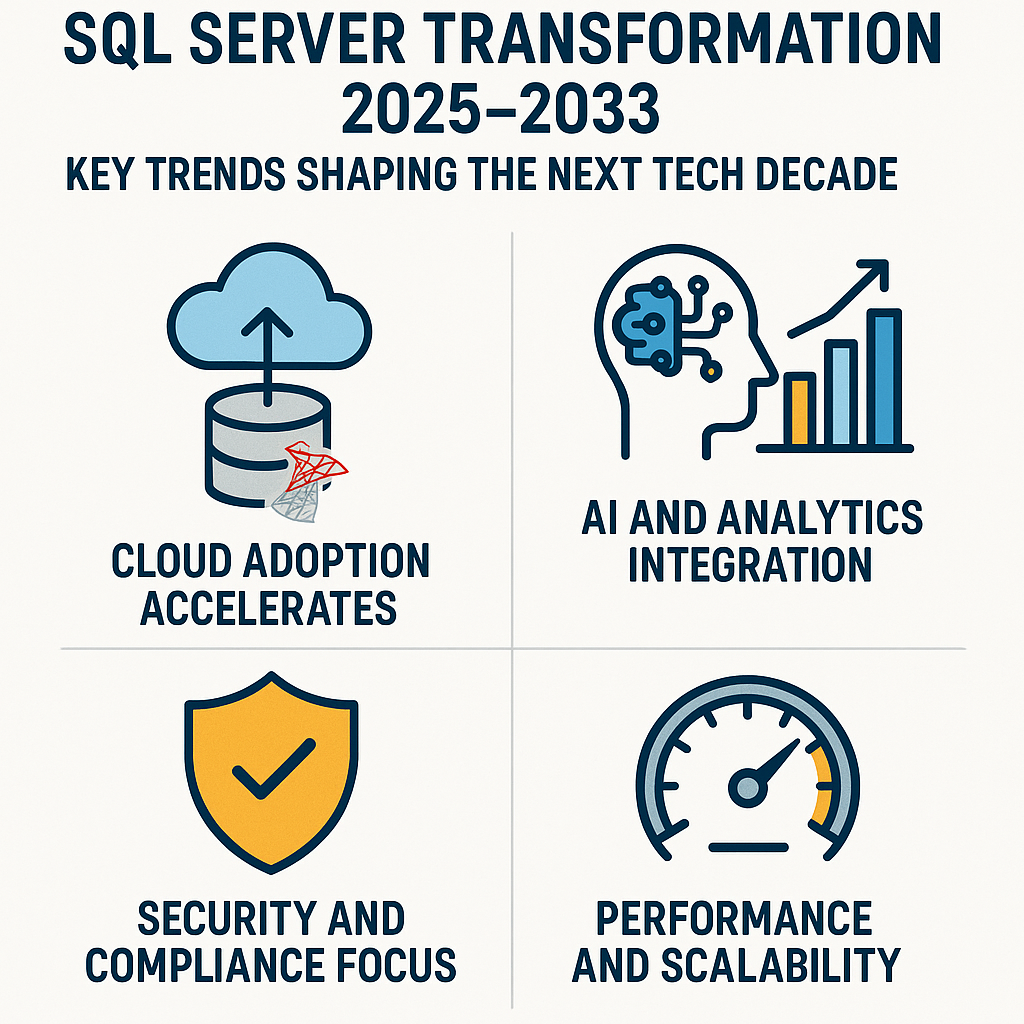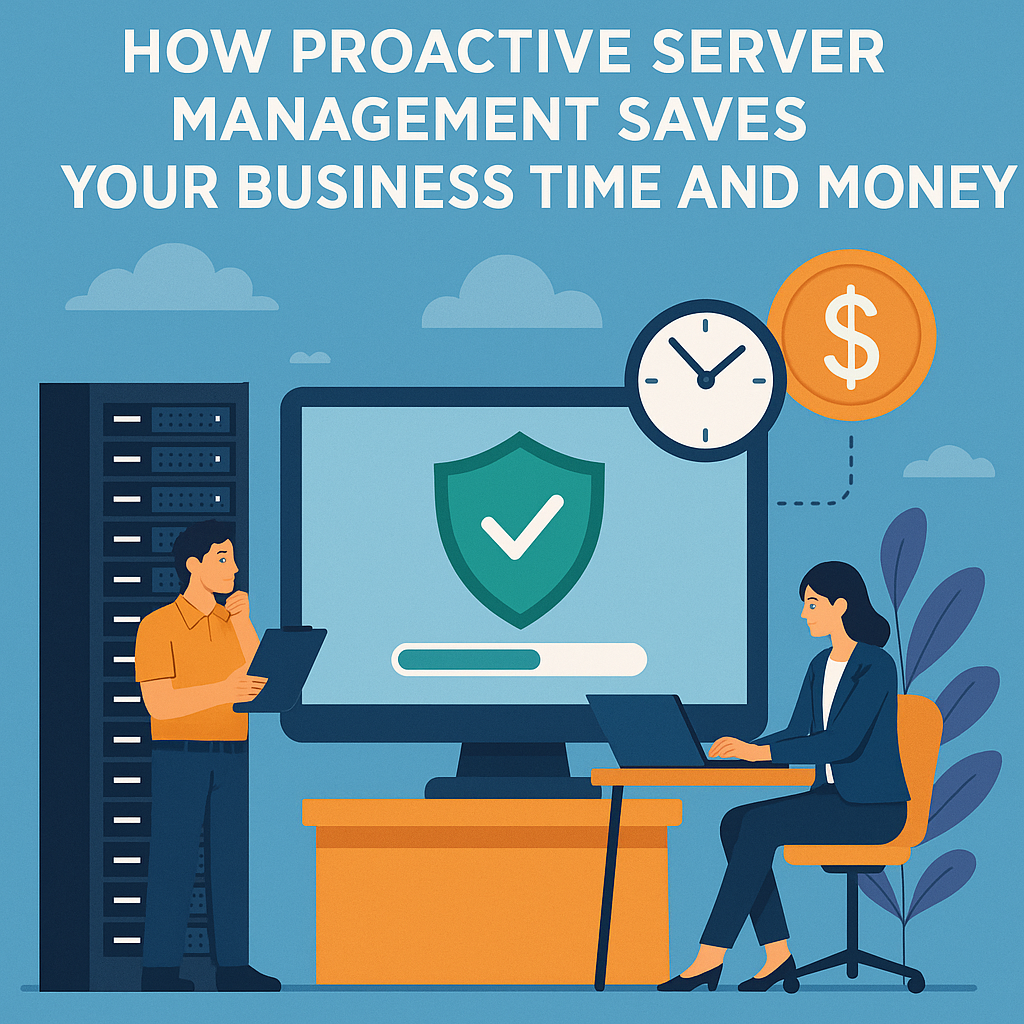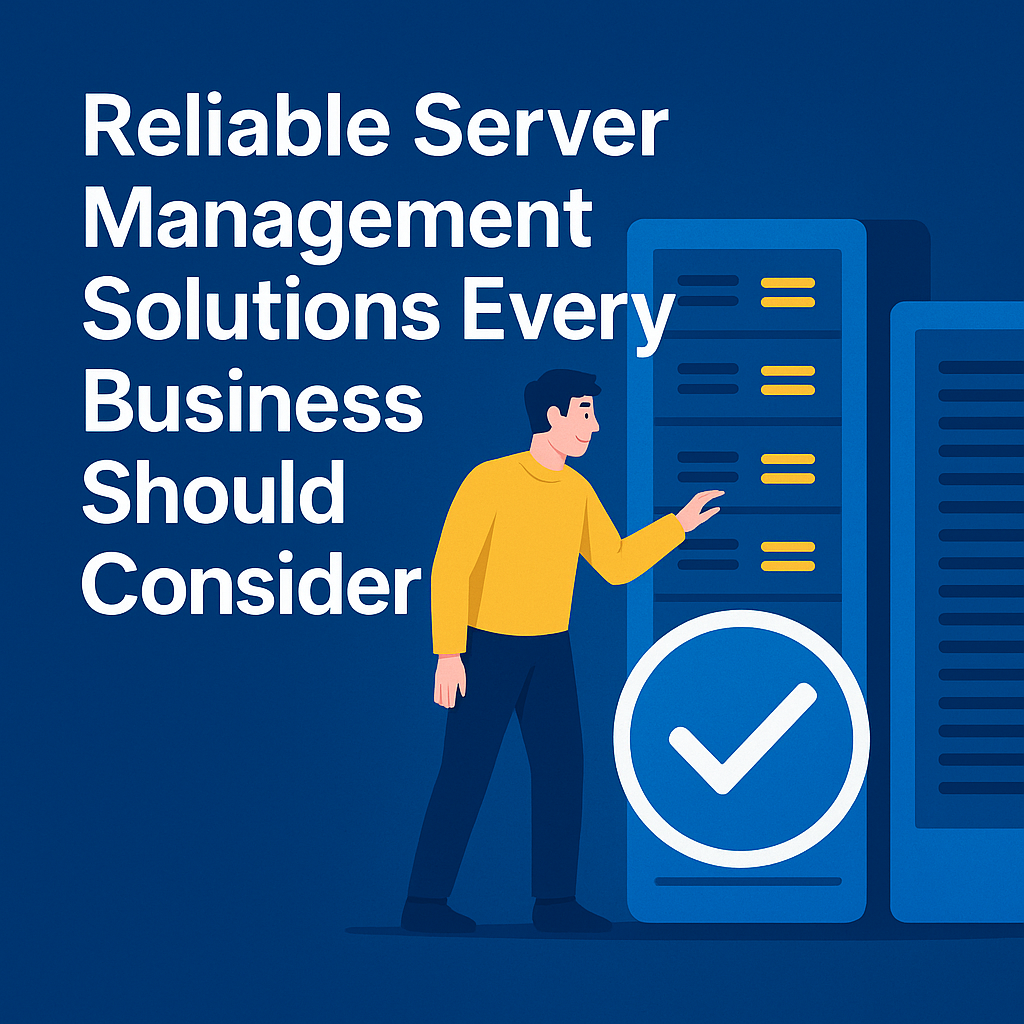DIY Server Support Checklist: Essential Steps Every Small Business Should Follow

Managing a small business often requires juggling many roles, and dealing with IT issues frequently ends up being one of them. While large enterprises have dedicated teams monitoring their infrastructure around the clock, small businesses must be resourceful, strategic, and proactive about server maintenance. The good news? With the right approach and systematic habits, you can maintain a healthy server environment without breaking the bank or requiring advanced technical credentials.
Understanding What You’re Really Managing
Before diving into maintenance tasks, it’s crucial to recognize that your server isn’t just a box in the closet or a virtual machine running somewhere in the cloud. It’s the central nervous system of your business operations, housing everything from customer data and financial records to email systems and collaborative workspaces.
Many small business owners underestimate their dependency until something breaks. The point of DIY server support isn’t to become an IT expert overnight, it’s to develop consistent habits that prevent catastrophic failures and keep your operations running smoothly. Think of it as preventive maintenance for your vehicle, regular oil changes are far less expensive and disruptive than engine replacement.
Daily Monitoring: The Five-Minute Health Check
Starting each business day with a brief server health check creates a baseline of normalcy that helps you spot problems before they escalate. This doesn’t require deep technical knowledge, just attention to patterns and deviations from the norm.
Log into your server management console first thing in the morning. Whether you’re managing a physical server or a cloud-based instance, you should have a dashboard that displays critical metrics. Look at CPU usage, memory consumption, and disk space. These numbers don’t need to be memorized, you’re looking for dramatic changes from yesterday or last week.
Is your disk suddenly 95% full when it was at 70% yesterday? That’s a red flag. Is memory usage spiking at unusual times? Worth investigating. Have you noticed your network activity dipping to almost zero during hours when your team should be busy online? Something might be blocking connections.
Check that your core services are responding. Try accessing your email, opening a shared document, or connecting to your database. If you can perform your normal business activities, your server is likely functioning correctly. This empirical test often catches issues that metrics alone might miss.
Review overnight backup logs. Most backup systems generate reports indicating success or failure. A failed backup isn’t necessarily an emergency, but three consecutive failures definitely require immediate attention. Your backup system is your insurance policy, and you need to know it’s actually working before you need to file a claim.
Weekly Maintenance: The Deep Dive
Once a week, schedule thirty to forty-five minutes for more thorough server maintenance. Pick a consistent time when system usage is typically low, perhaps early morning before the team arrives or during lunch when activity naturally decreases.
Start by applying pending updates. Operating system patches, security updates, and application upgrades keep your server protected against known vulnerabilities. The key is testing in a controlled way. If you’re managing a single production server without a test environment, schedule updates during off-hours and verify critical functions immediately afterward. For cloud-based servers, many platforms offer automated patching windows that you can configure to minimize disruption.
Review user accounts and access permissions. Small businesses often accumulate digital debris, former employees still have active accounts, contractors who finished projects months ago retain access, and temporary permissions granted for specific projects become permanent. Take a moment to review which team members have access to specific systems and resources.
Disable accounts for departed team members immediately, and adjust permissions to match current roles and responsibilities.
Examine system logs for unusual activity. You don’t need to read every entry, but scan for patterns of failed login attempts, access denied errors, or service crashes. Most server operating systems highlight critical events automatically. Pay particular attention to security-related warnings, these often indicate probing attempts by malicious actors looking for vulnerabilities.
Test your backup restoration process. It’s not enough to know backups are running, you need confidence that you can actually recover data when needed. Once a week, restore a small file or folder from backup to verify the process works. This practice has saved countless businesses from discovering their backups were corrupted or incomplete only after a major data loss event.
Clean up temporary files and log archives. Servers accumulate digital clutter just like physical spaces. Application logs, temporary files, system caches, and old backups can consume surprising amounts of storage. Most server operating systems include disk cleanup utilities that safely remove unnecessary files. Regular housekeeping prevents the storage crisis that inevitably occurs at the worst possible moment.
Monthly Reviews: Strategic Assessment
Beyond daily checks and weekly maintenance, reserve time each month for strategic assessment of your server infrastructure. This is the point where you pause the day-to-day work and evaluate whether your existing setup still aligns with your company’s goals.
Analyze performance trends over the past thirty days. Most monitoring tools can generate graphs showing resource utilization over time. Are you consistently maxing out CPU during business hours? Memory usage creeping steadily upward? These trends suggest it may be time for hardware refreshes, fine-tuning your configurations, or balancing workloads to prevent a noticeable drop in performance.
Review storage growth and project future needs. Calculate how much disk space you’re consuming monthly and extrapolate forward. If current trends continue, will you run out of space in three months? Six months? A year? Proactive capacity planning is far less stressful than emergency storage expansion when the server refuses to accept new data.
Test your disaster recovery plan. Beyond simple file restoration, can you actually rebuild your entire server if the hardware fails or becomes compromised? Walk through your documented recovery procedures and verify that you have everything needed to restore operations. This includes installation media, license keys, configuration documentation, and backup archives. If you discover gaps, this is the time to fill them.
Audit security configurations and update your approach based on emerging threats. Review firewall rules, ensure antivirus definitions are current, verify that remote access is properly secured, and confirm that encryption is enabled for sensitive data. Security isn’t a one-time setup, it’s an ongoing adaptation to evolving threats.
Document changes made during the month. Your server configuration gradually evolves through updates, user additions, application installations, and setting adjustments. Maintain a simple change log noting what was modified and when. This documentation becomes invaluable when troubleshooting mysterious issues that emerge weeks or months after a configuration change.
Quarterly Deep Maintenance: The Comprehensive Review
Every three months, conduct a thorough evaluation of your entire server environment. This is your opportunity to address items that don’t require immediate attention but compound into significant issues if perpetually deferred.
Perform a complete security audit. Review all user accounts, examine permission structures, analyze access logs for suspicious patterns, test your backup encryption, and verify that security policies match your current business requirements. Consider running vulnerability scans using tools designed for small business environments. Many free and low-cost options can identify common security weaknesses.
Evaluate and optimize database performance. If your business applications rely on databases, their performance directly impacts productivity. Run database maintenance routines like index rebuilding, statistics updates, and integrity checks. Many database systems include automated maintenance plans, but quarterly reviews ensure these automated tasks are actually running and achieving desired results.
Review application licenses and subscriptions. Server software often requires licenses that need renewal. Create an inventory of all applications running on your server, note their license expiration dates, and verify that you’re compliant with terms of use. This proactive approach prevents disruptions from unexpected license expirations and helps identify subscriptions you’re paying for but no longer using.
Assess hardware health for physical servers. If you’re running on-premises equipment, check physical components for signs of wear. Listen for unusual fan noises, verify that temperature sensors show normal operating ranges, and inspect for dust accumulation that could cause overheating. Consider whether aging hardware is becoming a liability that warrants replacement before failure forces an emergency upgrade.
Conduct load testing to verify capacity. As your business grows, gradual performance degradation can become invisible to daily users who adapt to slightly slower response times. Quarterly load testing reveals whether your server can still handle peak demands with acceptable performance. This is especially important before high-demand periods like holiday shopping seasons or fiscal year-end processing.
Creating Your Customized Checklist
While the framework above applies broadly to small business servers, your specific environment requires customization. A retail business running point-of-sale systems has different priorities than a consulting firm primarily using file sharing and email.
Start by inventorying your critical services. What applications absolutely must function for your business to operate? These are your highest priority items for monitoring and maintenance. Build your daily and weekly checks around ensuring these essential services remain healthy.
Identify your risk tolerance and recovery time objectives. How long can your business function without server access? Hours? A day? A week? Your answer determines the frequency and comprehensiveness of your backup strategy, the urgency of addressing performance issues, and whether you need redundant systems.
Document your specific procedures using clear, step-by-step instructions. Future you, or whoever takes over these responsibilities, will appreciate explicit directions rather than vague guidelines. Include screenshots, specific command sequences, and expected outcomes so that even someone with limited experience can follow the process successfully.
Create calendar reminders for each maintenance task. Daily checks become habit, but weekly, monthly, and quarterly tasks need scheduling to prevent them from being perpetually postponed during busy periods. Treat these maintenance windows as unmovable appointments, because prevention is always more convenient than crisis management.
When to Recognize Limitations
DIY server support works well for straightforward environments and routine maintenance, but certain situations warrant professional assistance. Recognizing when you’ve reached the limits of your expertise or available time is itself an important skill.
Complex troubleshooting of intermittent issues often requires specialized diagnostic tools and experience that comes from seeing similar problems across many environments. If you’ve spent hours researching and attempting fixes without progress, the productive choice is usually consulting someone with deeper expertise rather than continuing to experiment.
Major infrastructure changes like server migrations, significant capacity upgrades, or architectural redesigns benefit from professional planning. The cost of expert guidance for these transitions is typically far less than the cost of mistakes during implementation.
Security incidents require specialized response. If you discover evidence of a breach, unauthorized access, or malware infection, immediately engage security professionals. Improper incident response can worsen the situation, destroy evidence needed for recovery or legal action, and extend your exposure window.
Compliance requirements in regulated industries often mandate specific security controls and audit trails that require professional implementation and verification.Industries like healthcare, finance, and other regulated fields should work with IT experts who specialize in compliance to ensure their server infrastructure adheres to all required legal standards.
Building Sustainable Habits
The difference between server environments that run smoothly and those that lurch from crisis to crisis usually isn’t technical sophistication, it’s consistency. A simple maintenance routine performed reliably will outperform sporadic heroic interventions every time.
Start small if the complete checklist feels overwhelming. Begin with daily health checks and weekly backups. Once those become habits, add monthly reviews, then quarterly deep maintenance. Building incrementally creates sustainable practices rather than ambitious plans that collapse at the first busy period.
Leverage automation wherever possible. Modern server operating systems include scheduling tools that can automatically perform routine tasks, run maintenance scripts, generate reports, and alert you to problems. Time invested in setting up automation pays dividends in reduced manual workload and improved consistency.
Develop relationships with IT professionals even if you’re handling most tasks yourself. Having a trusted consultant you can call for advice, second opinions, or emergency assistance provides valuable insurance. Many IT service providers offer à la carte consulting hours that give you access to expertise without the commitment of ongoing managed services contracts.
Stay informed about common threats and best practices through small business IT communities, vendor blogs, and security advisories. You don’t need to become an expert on every topic, but awareness of current issues helps you recognize when your environment might be vulnerable and needs attention.
The Investment That Protects Your Investment
Your server infrastructure represents significant investment, not just in hardware and software costs, but in the business-critical data and processes it supports. DIY server support isn’t about cutting corners, it’s about being a responsible steward of essential business assets.
The time spent on systematic maintenance is productive work that directly protects your operations, customer relationships, and revenue. A weekend recovering from a preventable server failure costs far more than regular maintenance hours, both in direct impact and opportunity cost of what you could have been doing instead.
Small businesses succeeding with DIY server support share common characteristics. They’re consistent rather than sporadic, proactive rather than reactive, and realistic about both their capabilities and limitations. They treat server maintenance as an operational necessity like paying rent or maintaining inventory, not as an optional activity to fit in when convenient.
By following a structured approach to server support, you create resilience that lets you focus on growing your business rather than constantly firefighting IT issues. Your server becomes an enabler of success rather than a source of anxiety, and that transformation is worth the investment in systematic maintenance practices.
Frequently Asked Questions
Q: How much time should I realistically budget for DIY server maintenance each week?
Plan for approximately one to two hours weekly when everything is running normally. This includes your daily five-minute checks (about 30 minutes total for the week), one weekly maintenance session of 30-45 minutes, and occasional time for investigating minor issues. Monthly and quarterly reviews add a few hours to specific weeks. If you’re consistently spending significantly more time than this, it may indicate either systemic problems requiring professional attention or that your environment has grown beyond what’s reasonable for DIY management.
Q: What if I make a mistake during maintenance that breaks something important?
This is why backups are your first line of defense, always verify you have a current backup before making configuration changes. For most maintenance tasks, you can undo changes if something goes wrong. Keep a record of every change you make so you can easily undo it later if necessary. Begin with safer, low-impact adjustments as you build confidence, and always refer to guides or seek expert help before trying anything outside your expertise.. Most importantly, schedule maintenance during low-activity periods so any issues affect fewer users and you have time to resolve problems before critical business hours.
Q: Can I really manage a server without formal IT training?
Yes, for straightforward small business environments. Modern server operating systems and cloud platforms have become increasingly user-friendly with guided setup, automated maintenance, and intuitive management interfaces. You don’t need to understand every technical detail, you need to follow consistent procedures, recognize when something looks abnormal, and know when to seek help. Many successful small business owners have learned through doing, supplemented by online resources and occasional professional consultation.
Q: How do I know if my backups are actually working?
The only way to truly verify backups is to test restoration regularly. Weekly, restore a small file or folder to confirm the process works. Quarterly, simulate a more significant recovery scenario, such as restoring an entire database or recovering a user’s complete folder structure. Check backup logs daily to catch failures immediately. Many businesses have discovered too late that their backups were incomplete, corrupted, or never configured properly. Testing is the only way to have confidence when you actually need to recover data.
Q: What are the most common mistakes small businesses make with DIY server support?
The most frequent mistake is inconsistency, doing maintenance sporadically when remembered rather than systematically on a schedule. Second is neglecting backups until data loss occurs. Third is failing to apply security updates promptly, leaving systems vulnerable to known exploits. Fourth is ignoring warning signs like slowly degrading performance or increasing error messages until a crisis forces action. Fifth is trying to handle complex issues beyond their skill level rather than engaging professional help. Many of these issues arise because server maintenance is viewed as optional instead of being treated as a critical, ongoing responsibility.
Q: Should I use free tools or invest in commercial monitoring and management software?
Start with free tools built into your operating system or cloud platform. Windows Server includes extensive monitoring capabilities, Linux systems have powerful command-line tools, and cloud providers offer comprehensive dashboards at no additional cost. As your environment grows more complex or your time becomes more valuable, commercial tools that automate monitoring, alerting, and reporting can provide excellent return on investment. The key is finding the right balance for your current situation, simple environments rarely justify expensive tools, while complex ones quickly surpass what’s manageable with basic utilities.
Q: How do I handle server maintenance when I’m on vacation or unavailable?
Establish backup coverage before it’s needed. This could be a trusted team member you train on basic procedures, a relationship with an IT service provider who can handle emergencies, or a combination of both. Document your essential procedures clearly enough that someone else can follow them. For planned absences, perform comprehensive maintenance immediately beforehand to reduce the likelihood of issues during your absence. Consider cloud-based monitoring that alerts you remotely to critical problems, allowing you to coordinate response even when not physically present.
Q: My business is growing rapidly. When should I transition from DIY to professional IT support?
Several indicators suggest it’s time for professional support: you’re spending so much time on IT that it’s significantly reducing time available for business development; your environment has become complex with multiple servers, specialized applications, or regulatory compliance requirements; you’re experiencing frequent issues that disrupt business operations; or your team size has grown large enough that user support demands exceed what you can manage alongside server maintenance. Many businesses transition gradually, starting with consultant relationships for specific projects or monthly check-ins before moving to comprehensive managed services.
Q: What’s the single most important thing I can do to keep my server healthy?
Maintain reliable, tested backups. Everything else can be rebuilt, reconfigured, or recovered with time and effort, but lost data is often gone permanently. A robust backup strategy protects against hardware failure, software corruption, security breaches, user errors, and natural disasters. Beyond backups, consistency is the next most important factor, regular maintenance prevents small issues from becoming major crises. If you do nothing else, ensure you have backups that you’ve verified work, and check your server’s health regularly so you catch problems early.
Q: How can I learn more about server administration without formal training?
Start with vendor documentation from your server operating system provider, Microsoft, various Linux distributions, and cloud platforms all offer extensive free tutorials and documentation. YouTube has countless practical walkthroughs for common tasks. Online communities like Reddit’s r/sysadmin and Stack Exchange provide forums where you can ask questions and learn from others’ experiences. Consider vendor certifications as structured learning paths, even if you don’t pursue formal certification, the study materials provide comprehensive education. Most importantly, learn by doing in your own environment, hands-on experience is the best teacher, supplemented by documentation and community resources when you encounter unfamiliar situations.







No comment